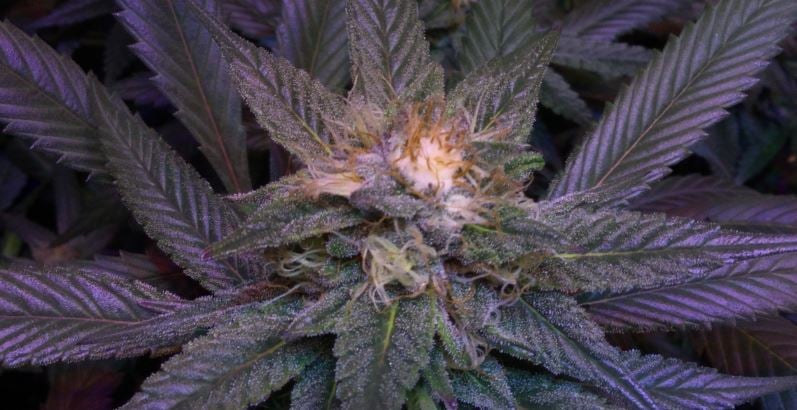Albino Cannabis Plants: Fact Or Fiction?
Published :
Feb 28, 2017
Categories :
Cannabis news

It is understandable, that pictures of white, seemingly snow-covered cannabis plants might raise some suspicions. Perhaps they simply look too beautiful to actually exists. They are indeed real, but what makes they appear this way might not actually be an advantage.
Every stoner, old and new, is aware of the luscious dark green colour of the cannabis plant. Less well known shades of cannabis also include red and purple. However, white cannabis is a rarity indeed. Many may have seen the pictures circulating on social media platforms and niche online forums. Large snow-white, mystical looking buds. The appearance of this type of cannabis is so extreme, that it immediately raises suspicions. Is this some sort of exquisite Photoshop effort? Or maybe somebody took a can of fake snow to their crop in order to spark a viral sensation. Well, it turns out white cannabis is far from a myth, it does actually exist. How is this possible? It’s due to a condition known as albinism.
WHAT IS ALBINISM?
Albinism in humans is due to a genetic condition where people are born without pigments in their bodies, which causes an almost colourless appearance. Their bodies do not produce normal amounts of melanin, which is responsible for the colour of skin, eyes and hair. At the root of the condition is a genetic mutation. When it comes to plants, a genetic mutation is also the cause.
ALBINISM IN PLANTS
Not only limited to humans, albinism is also found within the rest of the animal and plant kingdom too. When it comes to plants, including our good friend cannabis, albinism is associated with a partial or total loss of chlorophyll pigments. Some plants appear completely white, including bud, stem and leaves. However, other plants only sport a partial loss of chlorophyll and therefore appear to be part white and part green. Both of these categories look extremely aesthetically pleasing.
Although albinism in cannabis plants may look mesmerising, it isn’t exactly sought after by growers working towards crop yields of mammoth quantity and legendary quality. Because of the partial or complete lack of the chlorophyll pigments in albino cannabis, their ability to photosynthesise is reduced. Plants rely on their ability to photosynthesise to create carbohydrate sugars, which they need as an energy source in order to survive.
In order to plants to photosynthesise, they first require carbon dioxide and water. Through the absorption of light energy via the chlorophyll pigment, these are then converted into oxygen and glucose, which is the energy source plants need. Based on this information it becomes quite evident, that without chlorophyll, the survival rate of a plant seems to be near non-existent.
Therefore completely albino plants don’t really stand a chance, although it is speculated, that those that continue to grow develop a parasitic role and leech nutrients from neighbouring plants. However, those with only partial loss of pigmentation can still push on through.
LOW IN CANNABINOIDS
Due to their obvious disadvantage of obtaining optimal amounts of nutrition, albino cannabis plants produce smaller yields of lower quality than the average plants. This means you're not going to get dank buds full of THC and CBD from an albino plant. For growers with extremely limited space, this might be a problem, as the space, light and soil, that this plant is taking could all be used with a plant with sufficient chlorophyll, that could produce a decent yield. However, those with room to spare may want to enjoy the visual benefits of keeping this plant around for a while. It makes for some good macro photography and also adds an ornamental effect to the grow space.
LIGHT DAMAGE VS ALBINISM
Albino plants should not be confused with plants that appear white due to high intensity lamps. Some growers may claim that when they closed the proximity between their crop and their light source, a colour change similar to albinism occurred. However the white, snowy effect achieved here is not due to a genetic mutation. It is caused by the breakdown and degradation of the chlorophyll pigment at the hands of light intensity. When your crop is placed too close to such a powerful light source, the pigments can be damaged and burnt, causing a loss in chlorophyll. This is the last thing that you want to be happening during the flowering stage of your plant's grow cycle. Less chlorophyll means less light absorption, which will result in less glucose formation and lower quality yields.







































